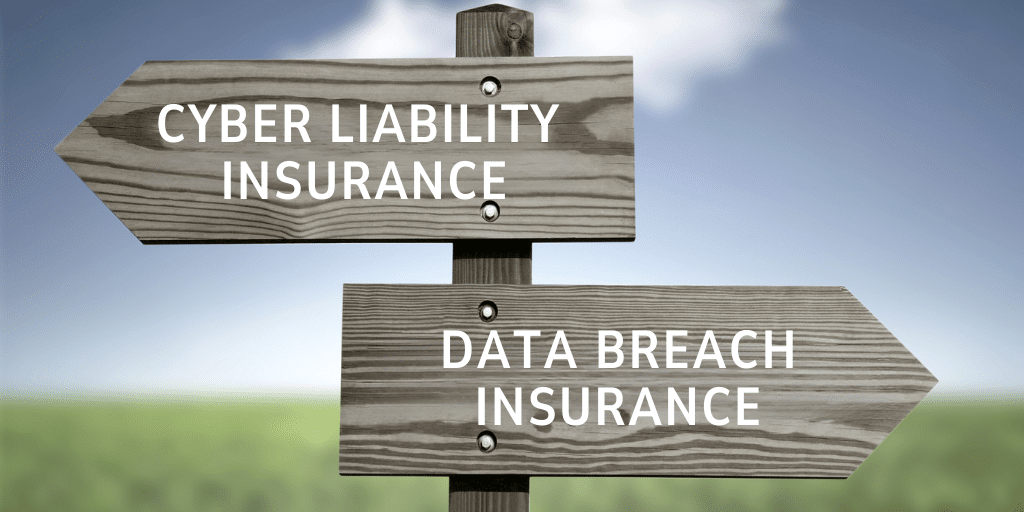Cyber Liability vs. Data Breach Insurance: Key Differences to Know Before You Buy

Cyber threats are a growing concern, and while plenty of information is available, it’s easy to confuse what different insurance policies cover. Although Data Breach Insurance is often included in Cyber Liability or General Liability policies, the two are not interchangeable. Understanding the key differences between Data Breach Insurance and Cyber Liability Insurance can help you make smarter, more confident decisions. Whether you’re considering standalone policies or filling gaps in your current coverage, knowing what each policy offers is important to choosing the protection that is most suited for you and your business.
Recognizing the Reality of Risk
According to IBM’s 2024 Cost of a Data Breach report, the global average cost of a data breach is $4.88M. This 10% increase from last year is only expected to rise.
The report also found that breaches involving data stored in public clouds came in with the highest average breach cost of $5.17M. This highlights the importance to understanding your information landscape to better protect your data.
Many attorneys hear about these large losses and think, “I’m not a huge firm, so I don’t need to worry about this”.
The reality is that law firms store sensitive information that is lucrative to cybercriminals.
Think of it like this: If a cybercriminal can effortlessly collect a few social security numbers or credit cards, why wouldn’t they? By attacking a few small law firms and successfully stealing pieces of sensitive data, they could acquire quite a portfolio.
Cybercriminals are crafty, capable and motivated. With even small pieces of stolen data, they can research and plan more strategic attacks on future victims.
Smart businesses acknowledge the likelihood of being targeted and prepare accordingly. In addition to implementing proactive measures, such as creating a cyber response plan, you can protect your business financially with cyber insurance solutions.
Cyber Liability Insurance vs. Data Breach Insurance
What are the key differences between Cyber Liability Insurance and Data Breach Insurance?
Simply put:
- Cyber Liability Insurance is a comprehensive policy that covers third-party claims stemming from a wide range of cyber incidents.
- Data Breach Insurance is a more focused policy that covers the losses and costs specifically related to a data breach.
While these two insurance policies are related, understanding their differences can help you make the proper purchase for your needs.
First-Party Insurance vs. Third-Party Insurance
Do you need first-party insurance, third-party insurance, or both?
- First-party insurance helps you respond to data breaches affecting your own systems and network.
- Third-party insurance covers lawsuits or claims resulting from breaches in a client’s or partner’s network or system.
Both type of coverage can be valuable, and many companies need both. The biggest difference to consider here if you’re choosing one or the other is to weigh the level of coverage and response support you require.
Most cyber policies offer a combination of first- and third- party coverages. When considering your options, it’s important to review both types within a policy.
And don’t ever hesitate to question the coverage! Whether you are curious, need more coverage, or need less, ask questions before your purchase to ensure you’re getting the right protection for your company’s needs.
Identifying Underwriting Factors
When considering what type of insurance to get, consult with a knowledgeable agent about your risk profile and business needs. This will help you determine the coverage that is most suitable for you.
Varying factors that can influence the underwriting process are:
- Business size
- Type of business
- Nature of business operations
- Level of cyber security measures in place
- Type of data being handled and stored
- The business’s available budget
Budgeting: Quality vs Price
Budgeting is necessary for every household and business. However, part of budgeting involves evaluating the trade-offs between cost and quality.
When purchasing insurance, you need to weigh the pros and cons of:
- Choosing the more robust but expensive option
- Opting for a more affordable, minimal coverage option
- Saving money today by making no purchase at all
Exploring Coverage Options
After identifying your risk factors and coverage needs, explore the options available to you.
You can purchase a standalone Cyber Liability Insurance Policy, which offers robust coverage and allows you to tailor your policy by purchasing add-on coverages to suit your needs.
Data Breach coverage is often included in Cyber Liability policies, and if it’s not, it may be available as an add-on option. Some General Liability Insurance policies also offer data breach coverage options.
If Data Breach Insurance is your primary concern, or you need specific limits or coverage that bundled options don’t provide, standalone policies are also available.
The simplest way to collect and review bids is to work with an agent who has access to multiple carriers and products.
Wrapping Up
Planning ahead for a post-breach response can significantly reduce the financial impact of a cyber incident. Investing in both a solid response plan and financial protection through insurance ensures you can act swiftly and confidently in the face of a threat.
Cyber Liability Insurance is a comprehensive policy that covers third-party claims that derive from a wide range of cyber incidents. Data Breach Insurance is a specified policy that covers the losses and costs that arise from a data breach.
The more you know, the more confident decisions you can make. Do your research and partner with an insurance agent who:
- Is knowledgeable about cyber liability risks and loss prevention, which will provide valuable insights and guidance.
- Has relationships with multiple carriers, giving you access to a range of coverage options and helping you compare policies side-by-side.
More Articles
Cyber Liability Insurance: Investment or Expense?
Cyber threats put every law firm at risk. A single attack can compromise client data and expose your firm to costly legal consequences. Cyber liability insurance offers financial protection, legal support, and compliance guidance—but is it a smart investment or just another expense?
Defending Against Ransomware Attacks Today
Explore the history of ransomware attacks, the tactics used today, and the proactive measures you can take to protect your law firm from this growing cyber threat.

